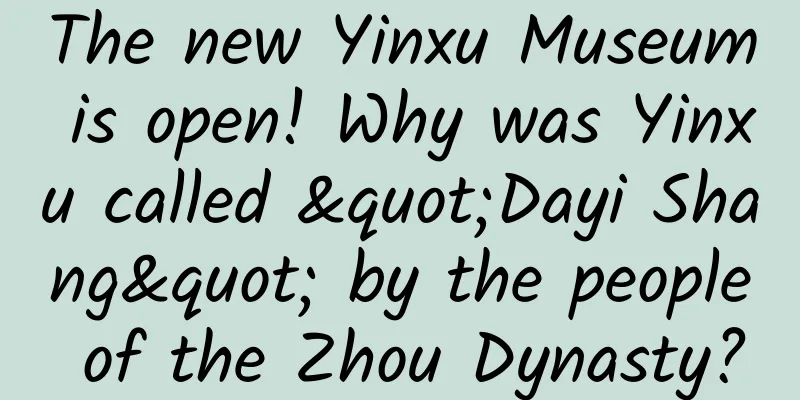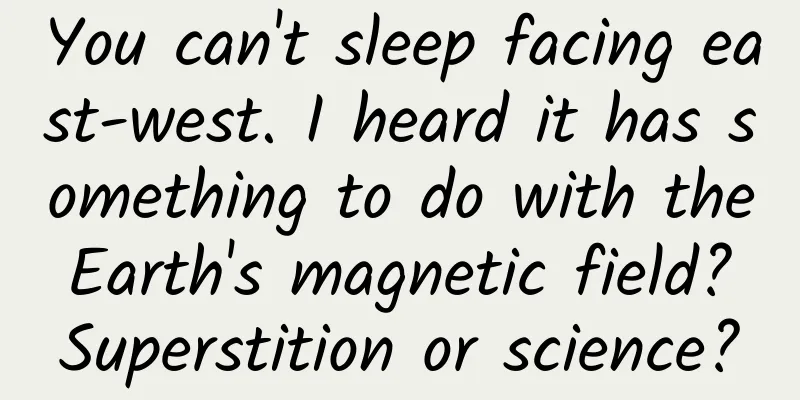The new Yinxu Museum is open! Why was Yinxu called "Dayi Shang" by the people of the Zhou Dynasty?

|
The new Yinxu Museum in Anyang, Henan Province, has recently opened to the public. Thousands of precious cultural relics are on display, most of which are on display for the first time. When we study middle school history, the textbooks cannot avoid Yinxu, a site from the late Shang Dynasty more than 3,000 years ago that shocked the world. We call it Yinxu now, but in the Zhou Dynasty, the people of the Zhou Dynasty called it "Dayi Shang". Why is that? The new Yinxu Museum (Source: Xinhua News Agency) 01 What is a “Yi”? "Shuowen Jiezi·Yibu" says: "Yi means country." However, some scholars have studied the usage of the word "Yi" in a large number of oracle bone inscriptions and believe that "Yi" in the concept of merchants does not mean "country", but refers to various "settlements". The villages, towns, urban communities, etc. that we are familiar with today are all specific manifestations of settlements. 02 Characteristics of Shangyi In the Anyang Basin where the Yin Ruins are located, a large number of “towns” were discovered in the middle and late Shang Dynasty. Among them, there are more than 20 towns on both sides of the Huan River in the middle Shang Dynasty (1400-1250 BC [1]), and more than 30 towns in the late Shang Dynasty (1250-1046 BC [1]). Archaeologists have studied the size and distribution of these settlements, or “yi,” and discovered the following key features: ▶The Sino-US Huanhe River Basin Archaeological Team composed of the Institute of Archaeology of the Chinese Academy of Social Sciences and the Science and Technology Archaeology Laboratory of the University of Minnesota found that these "cities" were basically distributed along both sides of the Huanhe River . ▶These "cities" are relatively "miniature", that is, small in scale, and their area is usually less than 50,000 square meters (about 1/14 of the size of the Forbidden City). Of course, there are very few "cities" with an area of up to 200,000 square meters (about 1/4 of the size of the Forbidden City) ▶These "cities" formed a "large city with many small cities " pattern in space, that is, a large city was surrounded by several small cities. For example, we can look at this map of the distribution of settlements in the Huan River Basin during the middle Shang Dynasty. Huanbei Shang City (the capital of the Shang Dynasty during the middle Shang Dynasty, scholars still have disputes about the nature of this capital, some believe it was "Pan Geng moved Yin", while others believe it was "He Dan Jia moved Xiang" [2]) with an area of about 5 million square meters. The area of the surrounding sites is less than 50,000 square meters, except for the Xiguanyuan site, which is more than 50,000 square meters. Distribution of settlements in the Huanhe River Basin in Anyang during the Middle and Late Shang periods (Source [3]) 03 Yinxu: The Magnificent City of Shang Let's look at the distribution map of settlements in the Huanhe River Basin during the late Shang Dynasty. In addition to the Yinxu, a super-large settlement of about 30 million square meters, only the Xiaobalizhuang and Dahantun sites have an area of more than 100,000 square meters, while the areas of the remaining sites are all below 100,000 square meters. This leads to the concept of "large Shang city". How did this name come about? We analyze it from two dimensions: physical materials and written materials from the Zhou people. First, from the physical data, the 122-character inscription on the bottom of the "He Zun", an early Western Zhou bronze vessel currently stored in the Baoji Bronze Museum in Shaanxi, contains the record "Only King Wu has conquered the Great City of Shang". In addition, from the textual data, the "Book of Documents: Many Scholars" written in the Eastern Zhou Dynasty mentioned "Tianyi Shang", which coincides with the "Tian (Great) City of Shang" in the oracle bone inscriptions. The He Zun and the 122-character inscription on its bottom (copyright image from the gallery; reprinting may cause copyright disputes) Mr. Zheng Ruokui from the Institute of Archaeology of the Chinese Academy of Social Sciences believes that the so-called "big city" of the Shang Dynasty can be understood from two levels: on the one hand, it can refer to the concept of a large unit settlement. Take Yinxu for example. For the settlements of the princes and states under its jurisdiction, it is a Shang king's capital and a "big city" settlement unit; on the other hand, "big city" can also be understood as a "small city" unit that can be decomposed into many "small cities" reflecting clan relationships . In the case of Yinxu, the "royal city" representing the Shang royal family and the "small cities" reflecting clans together constitute the grand layout of Yinxu, the magnificent Shang capital [4]. 04 “Xiaoyi” is not the settlement we understand today However, these "small towns" are not what we understand as settlements today. Today, it is common for neighbors living in a community or a village to have different surnames and blood ties. But the "small towns" of the Shang Dynasty were formed based on the blood ties of clan surnames. In other words, if you lived in a "small town" of the Shang Dynasty, the people who lived with you in the same settlement were from the same clan as you. As Tang Jigen, Jing Zhichun and other scholars said, as a capital city, Shang itself was like a whole. The small commercial towns it contained were interrelated in terms of space, function and blood relationship. References: 【1】 “Report on the Results of the Xia, Shang and Zhou Chronology Project (1996-2000) (Abridged Version)” [2] Hu Hongqiong, “Huanbei Commercial City and Chinese Commercial Culture”, Journal of Yindu University, No. 3, 2009. [3] “Shang City and Great Shang City in Anyang”, Tang Jigen and Jing Zhichun, Archaeology, No. 9, 2009. [4] Zheng Ruokui, “A Preliminary Study on the Layout of Clan Towns in the ‘Great City of Shang’ at Yinxu”, Cultural Relics of Central Plains, No. 3, 1995. author: Member of the BoxCat Chinese Science Writers Association, winner of the third prize in the article category of the 2017 "Top Ten New Science Makers" competition Zhai Guoqing, member of the Chinese Science Writers Association, 2016 "New Science Maker" Reviewer : Wang Yang, Associate Professor, Department of Archaeology, School of History, Wuhan University Produced by: Science Popularization China Produced by: China Science and Technology Press Co., Ltd., China Science and Technology Publishing House (Beijing) Digital Media Co., Ltd. |
Recommend
Why does Coca-Cola continue to advertise heavily?
We often see Coca-Cola advertisements in various ...
Medical AI technology is hot, but where does its business model end?
These are exciting times. With the huge wave of i...
Why is it so difficult to kill the “invincible” cockroach? Let’s see the battle between humans and cockroaches →
Cockroaches, scientifically known as Blatta, are ...
One-year price for renting Gigabit exclusive bandwidth, G-port broadband rental
BGP multi-line servers that rent gigabit bandwidt...
Hu Chao's Golden Rules of Time Management [Audio] Baidu Cloud Download
Hu Chao's Golden Rules of Time Management [Au...
NetEase, don’t drift away
NetEase published a statement on its portal websi...
The number of new confirmed cases in Hubei has dropped to single digits for the first time!
8 cases! #The number of newly confirmed cases in ...
JD Power: 2022 China Automotive After-Sales Service Satisfaction Study
Consumer insight and market research organization...
Chengdu Tea Selection Studio, a great place to drink and taste tea
Appointment arrangements for Chengdu Tea Tasting ...
LeTV Super Phone 2 review: a small TV with mobile phone functions!
The performance of LeTV Super Phone 2 will give p...
Do you know how Thread works?
[[194846]] [Quoted from CoorChice's blog] Bac...
What efforts have scientists made to help you eat more sweeter sugarcane? (Part 2)
Produced by: Science Popularization China Author:...
White spots on nails are not caused by calcium deficiency! The nails that really need to be worried are like this...
We give so much meaning to our nails! "My na...
The most comprehensive summary of the solution for diverting traffic from TikTok to WeChat
Readers often ask the author how to divert Douyin...
Basic concepts of product data analysis
Product data analysis , what indicators need to b...









